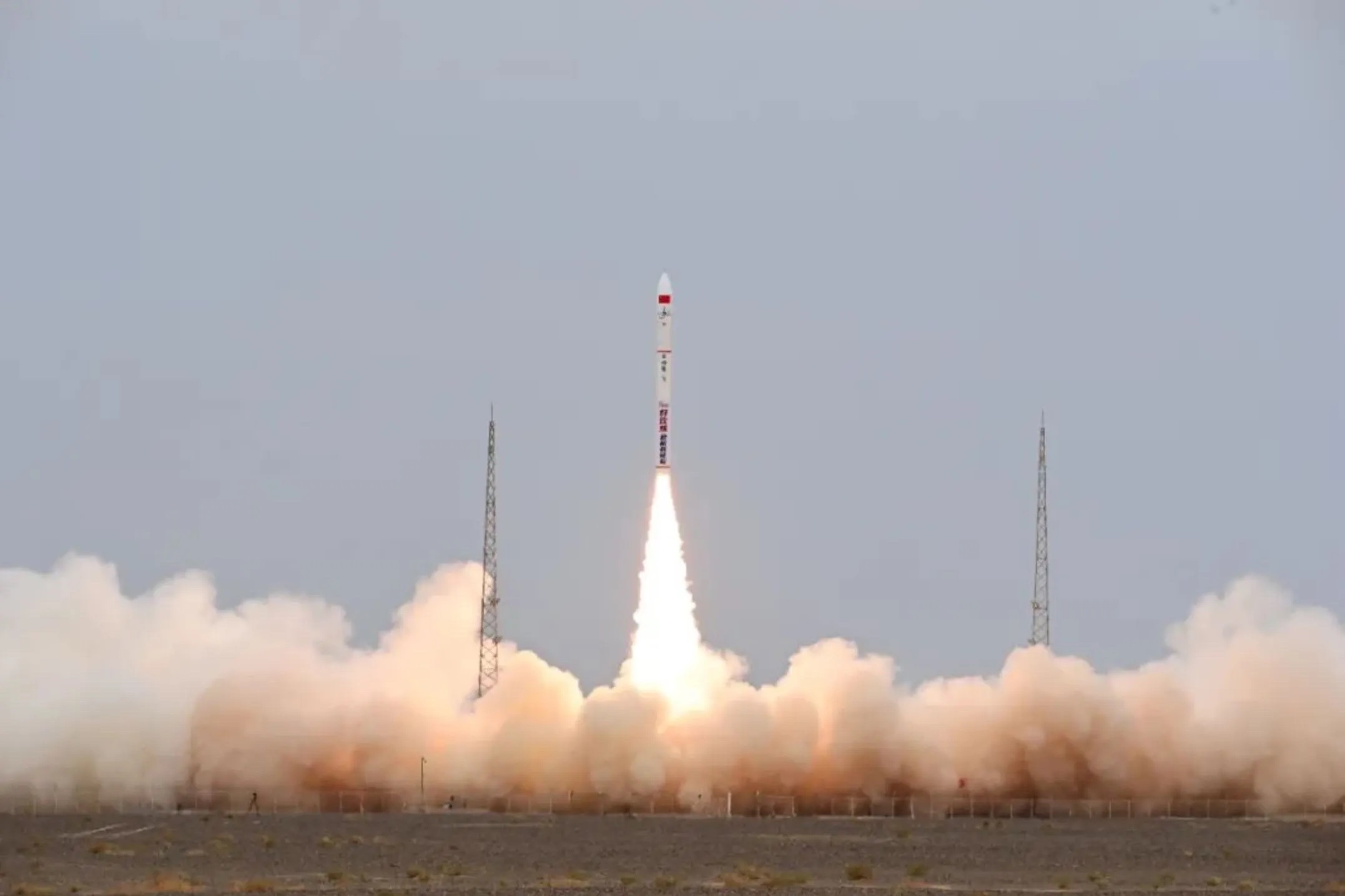10.08.2023

The seventh Ceres-1 rocket lifts off from Jiuquan spaceport at 0403 UTC, Aug. 10. Credit: Galactic Energy
HELSINKI — Chinese commercial firm Galactic Energy achieved its seventh launch success from seven attempts early Thursday and is now set for a first sea-based mission.
The seventh Ceres-1 solid rocket lifted off using a transporter erector launcher at the Jiuquan Satellite Launch Center in the Gobi Desert at 12:03 a.m. Eastern, Aug. 10 (0403 UTC). Aboard were seven satellites for a variety of customers.
The Beijing-based commercial firm is now preparing to make the first attempt by a Chinese commercial rocket company to launch from a mobile sea platform, a Galactic Energy representative told SpaceNews. The rocket will lift off from a platform off the coast of Haiyang, Shandong province, during a window starting Aug. 20 and running until the end of the month.
So far only the state-owned China Academy of Launch Vehicle Technology (CALT) and its affiliated China Rocket company have launched from the sea, using Long March 11 and Jielong-3 (“Smart Dragon-3”) solid rockets.
Thursday’s launch carried Xiguang-1 (01), Star Pool-1B satellite, GeoSat Intelligent Emergency-1, and the Xi’an Hangtou -88, -96, -104 and -112 satellites. The satellites are expected to enter roughly 500-kilometer-altitude sun-synchronous orbits.
Xikuang-1 (01) is a 100-kilogram class hyperspectral satellite belonging to the Xikuang-1 series developed by Xi’an Zhongke Xikuang Aerospace Science and Technology Co., Ltd., or Xiopm Space. The satellite carries multiple payloads including a hyperspectral camera, infrared camera, panchromatic camera, on-board intelligent processing unit for a range of Earth observation uses.
The four Xi’an Hangtou satellites are lightweight, low-power optical satellites focusing on assisting ecological sustainability in the Qinling region of Shaanxi, the province in which Xiopm Space is based.
Star Pool 1B is a wide-view, integrated sensing satellite independently developed by Elliptical Space and Time (EllipSpace). The multi-payload satellite features inter-satellite/satellite-ground communication and navigation enhancement capabilities.
The mission aims to verify miniaturization of payloads and the core technologies of the satellite of Star Pool Program and demonstrate its applications. The program envisions constructing a constellation or more than 100 “intelligent” satellites.
Geosat Intelligent Emergency-1 is an “AI-centered satellite” with an intelligent operating system, which is jointly developed by Geosat 2 Space Technology (Hangzhou) Co., Ltd. and Suzhou Tianxun Space Technology Co., Ltd. It is equipped with high-resolution array cameras, near-infrared cameras and IoT communications payloads, utilizing on-board intelligent processing technology.
The Ceres-1 solid rocket has a diameter of 1.4 meters, a length of about 20 meters, a mass at take-off of about 33 tons and a liquid propellant upper stage. It can deliver 400 kg to LEO or 300 kg to a 500-kilometer-altitude sun-synchronous orbit (SSO).
Galactic Energy now moves to focus on its first sea launch of the Ceres-1. The sea launch will carry the satellites Tianqi 21-24 for Guodian Gaoke, a commercial firm constructing its Tianqi low-Earth orbit narrow-band Internet of Things constellation.
The firm’s Tianqi-13 satellite took a Ceres-1 ride to orbit in January of this year.
The upcoming sea launch attempt adds to a number of breakthroughs for China’s commercial launch sector in 2023. These include the first successful launch of a commercial liquid propellant rocket, a global first methane-powered rocket reaching orbit, and an increased launch rate.
So far commercial firms Galactic Energy, iSpace, Space Pioneer and Landspace, as well as state-owned commercial spinoffs CAS Space and Expace, have all reached orbit so far this year. Another, Orienspace, is targeting its first launch with the Gravity-1 solid rocket in December. China is building commercial launch pads at Wenchang, Hainan island, to ease a bottleneck in access to spaceports. The sea launch facilities at Haiyang may also allow more commercial and liquid launchers in the future.
Quelle: SN

